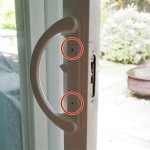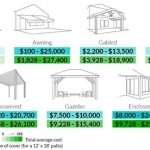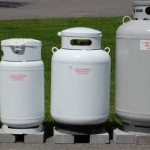Solar Patio String Lights Reviews: Illuminating Your Outdoor Space Sustainably
Solar patio string lights have emerged as a popular choice for homeowners seeking to enhance their outdoor ambiance without the hassle of electrical wiring or increased energy bills. These lights harness the power of the sun, converting solar energy into electricity to illuminate patios, gardens, balconies, and other outdoor spaces. This article provides a comprehensive overview of solar patio string lights, examining their key features, benefits, drawbacks, and offering insights into selecting the best options based on individual needs and preferences.
The allure of solar patio string lights lies in their ease of installation and environmentally friendly operation. Unlike traditional electric string lights, solar-powered options require no access to an electrical outlet, allowing for flexible placement in virtually any outdoor location. This eliminates the need for extension cords and the associated trip hazards. Furthermore, solar lights operate on renewable energy, reducing carbon footprint and contributing to a more sustainable lifestyle. The growing demand for energy-efficient and aesthetically pleasing outdoor lighting solutions has fueled the proliferation of solar patio string lights, with a wide array of styles, sizes, and functionalities available on the market.
Understanding the Key Components of Solar Patio String Lights
Solar patio string lights typically consist of several key components working in tandem: the solar panel, the rechargeable battery, the LED bulbs, and the control circuitry. The solar panel is responsible for capturing sunlight and converting it into direct current (DC) electricity. This panel is usually made of photovoltaic (PV) cells, which are semiconductor devices that generate electricity when exposed to light. The size and efficiency of the solar panel directly impact the amount of energy it can collect and, consequently, the brightness and duration of illumination provided by the lights.
The rechargeable battery stores the electrical energy generated by the solar panel. These batteries are typically lithium-ion or nickel-metal hydride (NiMH) and are designed to withstand repeated charging and discharging cycles. The capacity of the battery, measured in milliampere-hours (mAh), determines the amount of energy it can store and, therefore, the length of time the lights can remain illuminated after a full charge. A larger battery capacity generally translates to longer illumination times, especially during periods of limited sunlight.
LED bulbs are the light source in solar patio string lights. LEDs are preferred over traditional incandescent bulbs due to their energy efficiency, long lifespan, and durability. They consume significantly less energy than incandescent bulbs while producing a similar amount of light. LEDs also have a much longer lifespan, typically lasting tens of thousands of hours, reducing the need for frequent replacements. Furthermore, LEDs are more resistant to shock and vibration, making them ideal for outdoor use.
The control circuitry manages the charging and discharging of the battery, the operation of the LED bulbs, and various other functions, such as automatic on/off switching. This circuitry often includes a light sensor that detects ambient light levels and automatically activates the lights when it gets dark and deactivates them when it gets light. Some solar patio string lights also feature multiple lighting modes, such as steady-on, flashing, or fading, which can be selected using the control circuitry.
The placement of the solar panel is crucial for optimal performance. It should be positioned in a location that receives direct sunlight for several hours each day. Obstructions such as trees, buildings, or awnings can significantly reduce the amount of sunlight reaching the panel, thereby reducing the battery's charge and the duration of illumination. Many solar patio string lights come with adjustable mounting brackets, allowing users to angle the panel for maximum sun exposure.
Evaluating the Benefits of Solar Patio String Lights
The advantages of using solar patio string lights are numerous, making them an attractive option for outdoor lighting needs. One of the primary benefits is their energy efficiency. By harnessing solar energy, these lights eliminate the need for electricity from the grid, reducing energy consumption and lowering electricity bills. This is particularly beneficial for homeowners who use string lights frequently or for extended periods.
Another significant advantage is their ease of installation. Solar patio string lights require no electrical wiring, making them easy to install in virtually any outdoor location. This eliminates the need for professional installation, saving time and money. The lights can be simply hung from trees, fences, or other structures, and the solar panel can be mounted in a location that receives adequate sunlight.
Solar patio string lights are also environmentally friendly. By operating on renewable energy, they reduce carbon emissions and contribute to a more sustainable lifestyle. This is particularly appealing to environmentally conscious consumers who are looking for ways to reduce their environmental impact.
Furthermore, solar patio string lights offer enhanced safety. Because they are not connected to the electrical grid, there is no risk of electric shock or short circuits. This makes them a safer option for families with children or pets.
The versatility of solar patio string lights is another key benefit. They are available in a wide range of styles, sizes, and colors, allowing homeowners to customize their outdoor lighting to suit their individual preferences. Some models even offer multiple lighting modes, such as steady-on, flashing, or fading, allowing for further customization.
Addressing Potential Drawbacks and Considerations
While solar patio string lights offer numerous advantages, it is important to be aware of their potential drawbacks and limitations. One of the primary limitations is their dependence on sunlight. The performance of solar lights is directly affected by the amount of sunlight they receive. During periods of cloudy weather or shade, the lights may not charge fully, resulting in reduced brightness and shorter illumination times.
Another potential drawback is the battery life. Rechargeable batteries have a limited lifespan and will eventually need to be replaced. The lifespan of the battery depends on several factors, including the quality of the battery, the frequency of use, and the charging and discharging conditions. It is important to choose solar patio string lights with high-quality batteries to ensure a longer lifespan.
The brightness of solar patio string lights may also be a concern for some users. While LEDs are energy-efficient, they may not produce as much light as traditional incandescent bulbs. This can be particularly noticeable in areas that require a lot of light. However, the brightness of LEDs has improved significantly in recent years, and many solar patio string lights now offer sufficient brightness for most outdoor lighting applications.
The cost of solar patio string lights can also be a factor. While they are generally more expensive than traditional electric string lights, the long-term cost savings from reduced energy consumption can offset the initial investment. It is important to consider the overall cost of ownership, including the cost of replacement batteries, when comparing solar patio string lights with traditional electric options.
Maintenance is another aspect to consider. While solar patio string lights are relatively low-maintenance, they do require some occasional cleaning and inspection. The solar panel should be cleaned regularly to remove dirt, dust, and debris that can reduce its efficiency. The batteries should also be checked periodically for signs of corrosion or damage. Proper maintenance can help extend the lifespan of the lights and ensure optimal performance.
Water resistance is also a crucial factor to consider, especially in regions with frequent rainfall. Solar patio string lights should be designed to withstand outdoor weather conditions. Look for models that are rated as waterproof or water-resistant to ensure they can withstand rain, snow, and other forms of precipitation. Choosing lights with a higher Ingress Protection (IP) rating ensures greater protection against water damage.
In summary, while solar patio string lights are a great option for adding light and ambience to an outdoor space, it's important to weigh the pros and cons before deciding if they're right for you. Consider factors such as sunlight availability, desired brightness, and level of maintenance.

Gardenwize Garden Outdoor 2m Solar Micro Led Bulb String Fence Fairy Lights 10 Piece Diy At B Q

Venusop Outdoor Led Solar String Lights Review The Gadgeteer

Reviews For Brightech Ambience Pro 12 Light 27 Ft Outdoor Solar 2w 2700k Led S14 Hanging Edison Bulb String Pg 1 The Home Depot

Reviews For Westinghouse Outdoor 48 Ft 24 Light Solar Powered Edison Bulb Led String With Color Change Feature And Remote Pg 1 The Home Depot

Mainstays 10 Count Plastic Solar Powered Flame Effect Lantern Outdoor String Lights Com

The 3 Best Smart Outdoor Lights For Backyards Of 2024 Reviews By Wirecutter

120 Led Outdoor Solar Garden Light Globe Dandelion Lawn Lamp Landscape Walkway Flash String Com

Solar Firefly Powered Warm White 100 Led Outdoor String Lights Diy At B Q

The 3 Best Smart Outdoor Lights For Backyards Of 2024 Reviews By Wirecutter

Led Solar Lawn Lights Decorations Outdoor Waterproof Fairy Flower Starburst Stake With 8 Modes Home Decor Bedroom Wedding Holiday Garden Office
Related Posts








